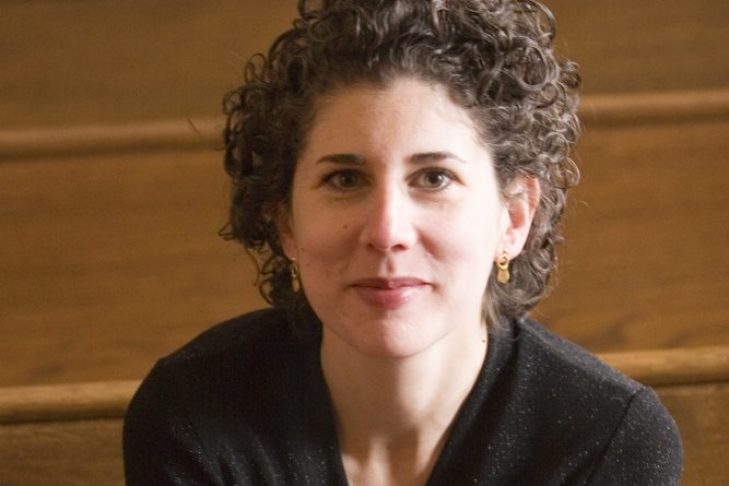Laura Nasrallah, Professor of New Testament and Early Christianity at Harvard Divinity School (HDS), has long been interested in the ways the ancient letters of the Apostle Paul provide evidence of the interaction between Jews and Gentiles in the ancient world.
One of the pressing questions surrounding the letters of Paul and his co-writers has to do with religious identity. Although the letters are found in the Christian New Testament, the letters never use the term “Christian” and were written before the coining of the term. As a result, how are we to understand them? What do they reveal about non-Jews in antiquity who were interested in affiliating with Judaism, including a particular form of Judaism that understood Jesus as Christ?
This spring semester, Nasrallah pioneered a collaboration that would allow her “Introduction to the New Testament” students to encounter perspectives that differed from their own. Partnering with Professor Maren Niehoff, a scholar of Philo of Alexandria whose students at Hebrew University in Jerusalem would bring experiences and perspectives as varied as those of Harvard Divinity School students, Nasrallah hoped to create presence in absence through today’s version of letter writing: Skype.
Students at HDS prepared by reading sections of Niehoff’s upcoming book on Philo, while students at Hebrew University watched recordings of Nasrallah’s lectures on Paul from her HarvardX course “Early Christianity: The Letters of Paul.” For two weeks, students on both campuses shared readings from Paul’s letters and Philo’s works, as well as scholarly articles. Mid-semester, students across the two universities were paired up for a 45-minute video discussion over Skype.
“The Skype was a kind of duplication of this larger issue of letter writing or this issue of history and the lacunae that we inevitably have,” Nasrallah said. Inspired by feminist theory and practices, she says, “It’s a bit hermeneutical—the idea that we’re not looking for the God’s-eye view of the Apostle Paul or of Philo of Alexandria. We’re looking to expand our knowledge by the multiplicity of the viewpoints that each of us brings.”
In their one-on-one Skype discussions, students were able to discuss class materials from across different cultural, political, and religious contexts.
“Some of them ended up spending way more than the 45 minutes—they ended up talking about politics, about the U.S. elections, as well as about what it means to read these ancient texts from different perspectives,” Nasrallah said.
Niehoff saw the conversations as an opportunity for important cultural and intellectual exchange. “For my students it was a real eye-opener to experience the great diversity of modern Christianities,” said Niehoff. “My students also saw how their familiarity with the Jewish tradition can help students raised in a Christian environment to attain a more nuanced picture of Judaism at the time of the New Testament.”
Denson Staples, a first-year MDiv candidate at HDS, said his conversation with a Hebrew University student named Noa brought new light to the world in which the Apostle Paul lived and wrote.
“The collaboration introduced the realities of how the Mosaic Law, as enumerated in the Hebrew Bible, is lived and practiced today by Jews in current-day Israel,” Staples said. “These realities, in turn, enriched my consideration and interrogation of how we might understand Paul’s writings at the time of their production and today.”
For first-year MDiv candidate Lindsey Franklin, talking with a Jewish student at Hebrew University increased her empathy toward the figure of Paul.
“I struggle a lot with Paul, as I read him to be affirming a kyriarchal framework that has been used to oppress people throughout history,” Franklin said. “Avi really tried to imagine himself in Paul’s position as a way to better understand him in a way that I have been unable to do.”
Nasrallah and Niehoff agreed that their biggest regret was not scheduling more time for the cross-classroom discussions.
“One of the opportunities technology brings is literally to allow different voices to be made present together,” Nasrallah said. “The students formed miniature communities and some seeds for what I hope would be more communication and more learning across different perspectives.”
While she avers that nothing can take the place of physical presence in a brick and mortar classroom, Nasrallah is optimistic about the role technology can play in her students’ educational experiences.
“When I take my students to Greece and Turkey to do work on archaeology, they learn a lot from just seeing different conditions in different countries and meeting with local scholars there, and this collaboration with Professor Niehoff was a no-cost way to do something similar without actually physically traveling,” Nasrallah said. “As technology makes the possibility for these exchanges easier, it is incumbent on us to think about how to harness those, to create more opportunities that are really strategic and well-organized.”
Nasrallah was excited to see how her students’ cross-cultural experiences influenced their outlooks—and their papers.
“It was an experiment,” Nasrallah said. “And it went very well!”
This post has been contributed by a third party. The opinions, facts and any media content are presented solely by the author, and JewishBoston assumes no responsibility for them. Want to add your voice to the conversation? Publish your own post here. MORE

